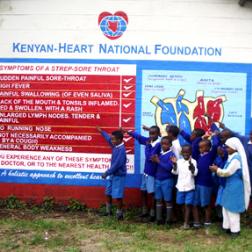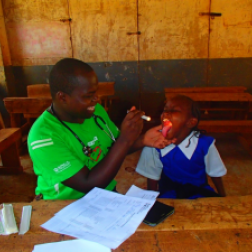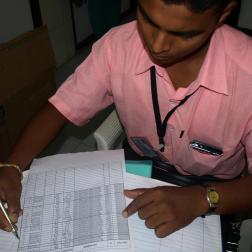About
The Atlas of Rheumatic Heart Disease provides a new way to view the global distribution of RHD burden, as well as programs and activities underway to help control the disease.
Information about the burden of disease and what's being done to prevent it is easy to explore through the interactive map format.
Global Burden of Disease Study
The Global Burden of Disease 2013 Study is a systematic effort to synthesize all available evidence on the burden of diseases and injuries worldwide. GBD 2013 produced estimates for the years 1990, 1995, 2000, 2005, 2010, and 2013.
Commonly reported metrics:
- Deaths (mortality rates)
- Years of life lost (YLL), which are age-specific deaths multiplied by remaining life expectancy at the age of death.
- Prevalence
- Years lived with disability (YLD), which are prevalent cases multiplied by a “disability weight” reflecting the severity of the disease.
- Disability-adjusted life-years (DALYs), which are the sum of YLL and YLD.
The principal source of raw data for deaths and YLL are vital registration (VR) data. GBD 2013 defines an “envelope” (maximum number) of deaths by age, sex, country, and year according to VR, census and other survey data. VR records are then analyzed using a complex statistical modelling process to determine what proportion of deaths are due to specific causes (including RHD). This statistical process uses supplemental data from other sources to “fill in” the gaps in places where data are weak.
GBD 2013 estimates for RHD
Strengths:
- A common approach across all diseases such that numbers of deaths and cases have to “add up” correctly.
- The most comprehensive source of raw data for global health, including data specific to RHD.
- Statistical methods that are able to produce estimates for regions where RHD data are sparse or do not exist.
Limitations:
-
Inability to correct for publication bias or certain other forms of non-sampling error.
-
No procedure to date that has included morbidity and mortality from stroke and infective endocarditis*.
Future iterations of the GBD Study, which will eventually be released yearly, will incorporate additional data on RHD as they become available and will develop models for the other sequelae of RHD.
The RHD Atlas presents the most current GBD data relating to RHD as a series of interactive webmaps.
Reference: Global Burden of Disease Study 2013. Global Burden of Disease Study 2013 (GBD 2013) Age-Sex Specific All-Cause and Cause-Specific Mortality 1990-2013. Seattle, United States: Institute for Health Metrics and Evaluation (IHME), 2014.
Population screening studies
A recent study conducted by Rothenbühler et al., 2014 examined the global prevalence of rheumatic heart disease. In order to estimate the combined prevalence of rheumatic heart disease within endemic countries, the review examined population-based studies from the regions of Asia, Africa, Oceania, Latin-America and Europe. Various meta-analyses were performed to explore the effect of screening modality, geography, and age, on the pooled prevalence estimates. The prevalence of clinically silent RHD was estimated to be 7 to 8 times more prevalent than clinically manifest disease, with globally pooled prevalence rates of 21.1 per 1,000 (95% CI 14.1 to 31.4) and 2.7 per 1,000 (95% CI 1.6 to 4.4), respectively.
Systematic Review
Study inclusion criteria:
- Population-based design
- Sample size of at least 500
- Inclusion of children at least 5 years old and adolescents younger than 18 years old
- Reporting on the prevalence of RHD
Definitions used in the review:
- Prevalence of RHD: “Total burden of valvular lesions consistent with RHD in a specified population.”
- Clinically manifest RHD: “Presence of a heart murmur on cardiac auscultation, consistent with echocardiographic evidence.”
- Clinically silent RHD: “Pathological regurgitation or mitral stenosis, or detection of morphological changes, or both, consistent with RHD in the absence of a heart murmur.”
The estimates and definition criteria for each study included in the review can be explored from with the RHD Atlas.
Reference: Rothenbühler, M., O'Sullivan, C. J., Stortecky, S., Stefanini, G. G., Spitzer, E., Estill, J., Pilgrim, T. (2014). Active surveillance for rheumatic heart disease in endemic regions: a systematic review and meta-analysis of prevalence among children and adolescents. Lancet Glob Health, 2(12), e717-726. doi: 10.1016/s2214-109x(14)70310-9 View on pubmed
Countries and control programs
In countries all around the world, people living with rheumatic heart disease, their doctors, as well as researchers and policy makers are working together to reduce the burden and end rheumatic heart disease.
A global overview of activities, control programs and country case studies, a well as current burden of disease estimates can be viewed from within the RHD Atlas.






